- Home
- Prelims
- Mains
- Current Affairs
- Study Materials
- Test Series
28th Sep 2021
CENTRE, EC, GOVT. TOLD TO REPLY TO PLEA SEEKING AAP DERECOGNITION
The Delhi High Court asked the Centre, Delhi government and Election Commission (EC) to respond to a petition regarding derecognition of the Aam Aadmi Party for organizing Ganesh Chaturthi using public money.
Highlights:

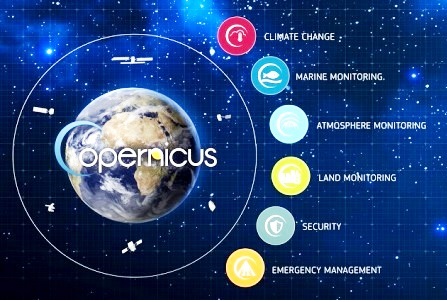
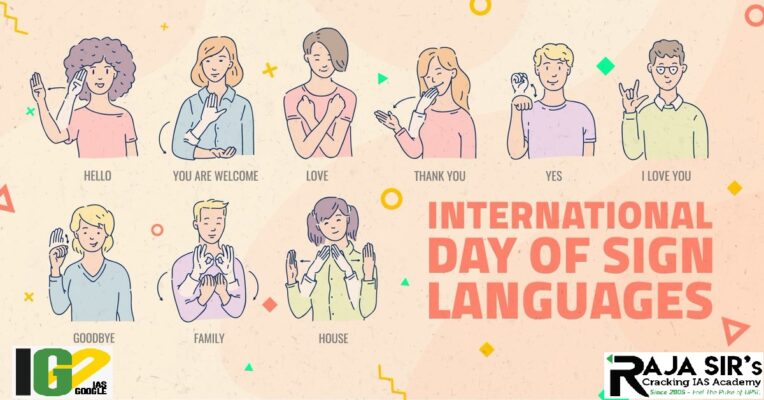

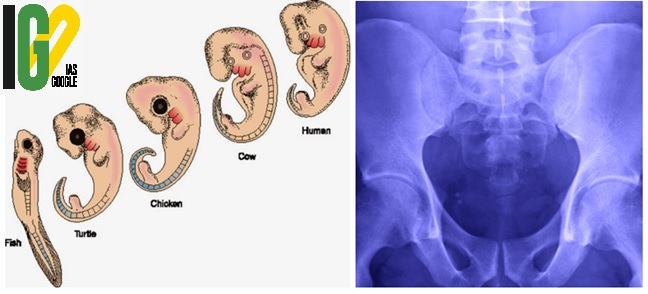


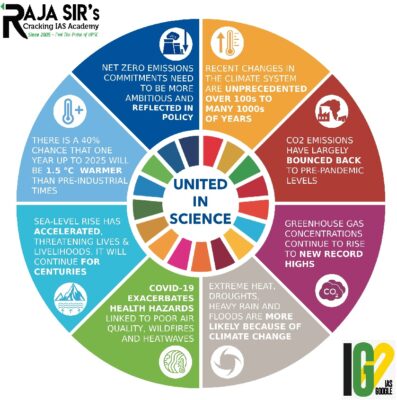
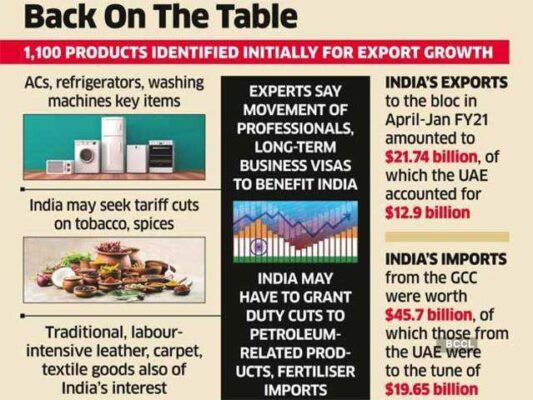


 A group of villagers who marched to the Kiu La pass for cattle grazing were denied access by the Indian Army.
A group of villagers who marched to the Kiu La pass for cattle grazing were denied access by the Indian Army.
 North-western University engineers have created an electronic microchip with the capability of flight. It is the smallest-ever human-made flying structures.
North-western University engineers have created an electronic microchip with the capability of flight. It is the smallest-ever human-made flying structures.

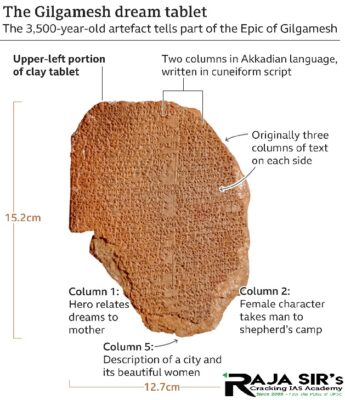
- Any funding to temple, mosque, religious persons/ trust, and religious function by the state government is unconstitutional.
- The Ganesh Puja organised by the Delhi government was unconstitutional.
- Secure at least 6% of the valid vote & win at least 2 seats in an Assembly General Election.
- Secure at least 6% of the valid vote & win at least 1 seat in a Lok Sabha General Election.
- Win at least 3% of the seats or at least 3 seats, whichever is more, in an Assembly General Election.
- Win at least 1 out of every 25 seats from a state in a Lok Sabha General Election.
- Secure at least 8% of the total valid vote in an Assembly or a Lok Sabha General Election.
- Secure at least 6% of the valid vote in an Assembly or a Lok Sabha General Election in any four or more states and won at least 4 seats in a Lok Sabha General Election from any State or States.
- Win at least 2% of the total Lok Sabha seats in a Lok Sabha General Election and these seats must be won from at least 3 states
- The party is recognized as a State Party in at least four states.
- A party recognized as a state party gets a reserved symbol within the state.
- All the candidates contesting from that party will get the same symbol throughout the state.
- For National Parties, the reserved symbol can be used across the country by its contesting candidates.
- Subsidized land for party offices
- Free air time on Doordarshan & All India Radio.
- Supply of electoral roll copies free of cost during elections.
- Bahujan Samaj Party (BSP)
- Bharatiya Janata Party (BJP)
- Communist Party of India (CPI)
- Communist Party of India (Marxist) (CPM)
- Indian National Congress (INC)
- Nationalist Congress Party (NCP)
- All India Trinamool Congress (AITC)
- National People’s Party (NPP)

- The portal will become a one-stop-shop for investors for approvals and clearances.
- It will bring transparency, accountability and responsiveness in the ecosystem and all relevant information will be available on a single dashboard.
- The portal hosts approvals across 18 Central Departments and 9 States under phase (I).
- Another 14 Central departments and 5 states will be added by December 2021 under phase (II).
- Know Your Approval (KYA):
- It generates a list of approvals required by any business to commence operations.
- It does so by asking the investor a series of dynamic questions about their planned business activities and identifies the applicable approvals based on responses.
- It was launched in 2021 with over 500 approvals across 32 Central Departments and over 2000 approvals across 14 states.
- Common Registration Form:
- To ensure the submission of information and documents across Ministries and States, a unified information capturing system along with a common registration form has been introduced.
- Information is auto-populated on forms, eliminating the need to fill in the same information again.
- State Registration Form:
- It enables an investor to have seamless single click access to respective State Single Window System.
- Applicant Dashboard:
- Provides a single online interface to apply, track and respond to the queries pertaining to approvals and registrations across ministries and States.
- Document Repository:
- An online centralized storage service for investors to enable one-time document submission and use the same across multiple approvals.
- It eliminates the need to submit documents at multiple portals.
- E-Communication Module:
- Enables online response to queries and clarification requests related to applications by Ministries and States.
- The report has urged for a dramatic revolution in the global food systems to make them more inclusive, fair and sustainable.
- It called for investing in and creating conditions for productive, economically viable and environmentally sustainable small-scale family farming.
- Small-scale family farmers are the foundation of food supply across all low- and middle-income countries.
- Farms of up to two hectares produce 31% of the world’s food on less than 11% of the farmland.
- They play a critical role in reducing rural poverty and ensuring national food and nutrition security.
- The report stressed on the importance of government investment in rural farms and local small- and medium-size enterprises that support activities after the farm gate, such as storing, processing, marketing and food distribution.
- There are 800 million hungry people and yet high obesity rates on the other hand.
- Nutritious diets are expensive yet many small-scale farmers are poor.
- Further, the current food growing practices are not good for our environment.
- Food systems are responsible for 37% of greenhouse gas emissions and highly vulnerable to a changing climate.
- Develop and focus on pricing systems that reflect the full and true cost of production, including rewarding farmers for ecosystem services, such as maintaining healthy soil and regulating pests.
- Making available innovations such as nature-based solutions, agro-ecology and affordable digital technologies to boost rural small-scale famers’ production.
- The measures will also enable the cultivators to be climate-resilient employing low-carbon and sustainable techniques.
- Making food markets accessible to villagers and on fair terms by rethinking the present concentration of power within food systems.
- Promote accessible and affordable nutritious food. This requires focusing on nutrition education, empowering women to make nutrition decisions, and stronger government policies to regulate and steer market choices.
- Incentives need to be given to reward nature-based practices and local, healthy diets.
- IFAD is an international financial institution and a specialized United Nations agency based in Rome – the UN’s food and agriculture hub.
- IFAD has been working in India since 1979.
- It invests in rural people, empowering them to reduce poverty, increase food security, improve nutrition and strengthen resilience.
- It aims to increase the rural poor’s access to agricultural technologies, natural resources, financial services, value chains and is sharing knowledge on poverty reduction and nutrition security.
- It targets its activities to the poorest and most vulnerable groups in rural society, such as small-scale and marginal farmers, women, tribal communities and scheduled castes.
- As per Copernicus Atmosphere Monitoring Service (CAMS), the cumulative CO2 emissions from violent forest fires in these two months was 2643.4 megatons.
- In July 2021, over half of the 1258.8 megatons of CO2 was attributed to fires in North America and Siberia.
- In August 2021, 1384.6 megatons of CO2 were released into the atmosphere by wildfires.
- Wildfires are common during the boreal fire season (of the Northern Hemisphere) that lasts from May to October every year.
- But the number of fires, their intensity, region covered and persistence were unusually high in 2021.
- States in India also recorded some of their biggest wildfires since 2020.
- Odisha recorded 51,968 forest fires from November 2020 to June 2021 — the state's highest.
- The Mediterranean basin emerged as the wildfire hotspot. The countries in the region experienced dry conditions and heatwaves in 2021.
- Intense wildfires in Siberia in 2021 corresponds with increased temperatures and decreased soil moisture in the region.
- In Sakha Region in north-eastern Russia, daily fire intensities surged and emissions doubled since 2020.
- Large-scale destruction and pollution were observed in the western regions of North America, Canada, Pacific Northwest and California throughout July and August.

- CAMS is a service implemented by the European Centre for Medium-Range Weather Forecasts, launched in November 11, 2014.
- CAMS, is part of the Copernicus Programme, and tracks air pollution, solar energy, greenhouse gases and climate globally, providing continuous data and information on atmospheric composition.
- It analyses data from its Global Fire Assimilation System collected using fire radiative power measurements from MODIS satellite by National Aeronautics and Space Administration.
- The service uses these calculations to make estimates of daily global emissions from fires.
- Copernicus is the Earth observation programme of the European Union in partnership with European Space Agency.
- It aims at achieving a global, continuous, autonomous, high quality, wide range Earth observation capacity, covering six main interacting themes: atmosphere, marine, land, climate, emergency and security.
- Space component (observation satellites and associated ground segment with missions observing land, atmospheric and oceanographic parameters).
- In-situ measurements (ground-based and airborne data-gathering networks providing information on oceans, continental surface and atmosphere).
- It warned that air pollution is one of the biggest environmental threats to human health, causing seven million premature deaths a year.
- Harms from air pollution begin at much lower levels than previously thought, hence, lowered acceptable thresholds for several pollutants, including ultrafine PM2.5.
- These guidelines are not legally binding on countries, but are meant to provide guidance to help reduce levels of air pollution.
- It does not include recommendations about pollutant mixtures or the combined effects of pollutant exposures.
- Average 24-hour exposure:
- PM2.5 must remain below 15µg/m³, down from 25µg/m³.
- PM10 particles has been lowered from 50 to 45µg/m³.
- Exposure over a year-long period:
- PM2.5 has been brought down from 10 to 5µg/m³.
- PM10 has been brought down from 20 to 15µg/m³.
- In comparison, India’s thresholds are many folds higher.
- According to the 2009 National Ambient Air Quality Standards still in force, the acceptable PM2.5 exposure limit over 24 hours is 60µg/m³ (four times the new WHO limit) and for exposure over a year-long period, 40µg/m³ (eight times the revised WHO threshold).
- There are also standards for a host of chemical pollutants including sulphur dioxide, lead and nitrogen dioxide.
- Despite some improvements in air quality, the global toll in deaths and lost years of healthy life has barely declined since the 1990s.
- Air quality has markedly improved in high-income countries, it has generally deteriorated in most low- and middle-income countries, in step with large-scale urbanization and economic development.
- As per the new guidelines, among 100 global cities, Delhi’s annual PM2.5 trends in 2020 was 16.8 times more than WHO’s revised air quality guidelines.
- Annual average PM2.5 levels in Delhi ranged from 114-145µg/m³ in 2020.
- Mumbai’s exceeded 8-fold, Kolkata 9.4, Chennai 5.4, Hyderabad 7 and Ahmedabad exceeded 9.8 fold.
- Large parts of the Indo-Gangetic Plains region, including several cities in Uttar Pradesh, West Bengal, Punjab, Haryana, had very high concentrations of PM2.5 and PM10.
- Every year, exposure to air pollution is estimated to cause 7 million premature deaths and result in the loss of millions more healthy years of life.
- In children- reduced lung growth and function, respiratory infections and aggravated asthma.
- In adults- ischaemic heart disease and stroke, other effects such as diabetes and neurodegenerative conditions.
- State of Global Air (SOGA 2020) estimated that over 116,000 infants in India died within a month after their birth due to exposure to severe air pollution in 2019.
- India had the highest burden of infant deaths due to air pollution followed by Nigeria, Pakistan, Ethiopia and the Democratic Republic of Congo.
- India released National Clean Air Programme (NCAP) in January 2019 which aims to achieve a 20% to 30% reduction in PM 2.5 concentrations over 2017 annual levels in over a hundred cities by 2024.
- NCAP does not have a legal mandate.
- 90% of the entire global population is breathing polluted air.
- Both PM2.5 and PM10 are capable of penetrating deep into the lungs but PM2.5 can even enter the bloodstream, primarily resulting in cardiovascular and respiratory impacts.
- PM is primarily generated by fuel combustion in different sectors including transport, energy, households, industry and from agriculture.
- In 2013, outdoor air pollution and particulate matter were classified as carcinogenic by WHO’s International Agency for Research on Cancer (IARC).
- The Fund is administered by Kendriya Sainik Board (KSB) Secretariat under the aegis of its Management Committee and Executive Committee.
- Managing Committee is headed by Raksha Mantri at the Centre and Governor / Lt Governor of the State.
- Executive Committee is headed by Secretary, Ex-Servicemen Welfare (ESW).
- Out of the income earned on the AFFDF corpus, 7.5 per cent is ploughed back into the corpus and balance is used to fund the welfare and rehabilitation schemes for Ex-Servicemen (ESM)/dependents.
- AFFDF is formed by amalgamation of the following:
- Amalgamated Special Fund for war bereaved, war disabled and other ESM/serving personnel
- Armed Forces Flag Day Fund
- St.Dunstan's (India) and Kendriya Sainik Board Fund
- Indian Gorkha Ex-Servicemen's Welfare Fund.
- Some of the important welfare schemes funded out of AFFDF are as under:
- Raksha Mantri's Ex-servicemen Welfare Fund (RMEWF)
- Financial Assistance for Serious Diseases
- Paraplegic Rehabilitation Centres (PRCs)
- War Memorial Hostels (WMHs)
- Since 1949, 7th December is observed as the Armed Forces Flag Day throughout the country to honor the martyrs and the men in uniform who valiantly fought on our borders to safeguard the country's honor.
- On this day, Army, Navy and Air Force personnel who sacrificed their lives for the cause of the nation are remembered by observing two-minute silence at 11:00 hours as a mark of respect.

- The day supports and protects the linguistic identity of people who are deaf along with people using sign languages.
- Theme 2021: We Sign for Human Rights
- Sign languages are the ones that use visual-manual modality to convey the meaning.
- United Nations (UN) describes sign languages as natural languages, structurally distinct from spoken languages.
- The convention on the rights of persons with disabilities recognizes and promotes the use of sign languages.
- They are equal in status to spoken languages.
- It obligates states to facilitate the learning of sign languages and promote the linguistic identity of deaf people.
- It was first celebrated in the year 2018 as a part of the International Week of the Deaf.
- 23 September commemorates the date World Federation of Deaf (WFD) was established in 1951.
- There are over 70 million deaf people across the globe and 80% of these are from developing countries.
- Over 300 different sign languages are used across the globe.
- It aims to raise awareness about the importance of sign languages.
- It recognizes the importance of preserving sign languages as a part of linguistic and cultural diversity.

- The DQL study is conducted by the cybersecurity company Surfshark, and covers 90% of the global population.
- It provides a robust global outlook into how countries excel digitally and sets the basis for digital advancement.
- It evaluates countries based on a set of five fundamental digital wellbeing pillars, which include:
- e-government
- e-security
- Internet affordability
- Internet quality
- e-infrastructure
- Denmark ranks 1st in DQL, followed by South Korea, Finland, Israel and the U.S.
- Ethiopia, Cambodia, Cameroon, Guatemala, and Angola.
- India ranks 33rd in e-government, 36th in e-security, 47th in internet affordability, 67th in internet quality and 91st in e-infrastructure.
- India has demonstrated a slight drop compared to DQL 2020, falling from 59th to 61st place.
- India ranks 17th in Asia and 1st in the Southern Asia region.
- India’s e-security has improved by 76% since 2020 and ranks higher than China’s.
- Mobile speed in India is one of the slowest in the world (12.33 Mbps) and the country comes only 95th in the number of individuals using the internet.

- The researchers began with the reasoning that our ancestors lost their tail after mutation altered one or more of a set of 30 genes that are involved in the development of tails in various species.
- To search for those mutations, they compared the DNA of six species of tail-less apes to nine species of tailed monkeys.
- Eventually, they discovered a mutation that is shared by apes and humans, but is missing in monkeys—in a gene called TBXT.
- TBXT was one of the first genes to be identified by scientists nearly a century ago, the mutation had not been observed before.
- It consisted of 300 genetic letters in the middle of the TBXT gene.
- The researchers genetically engineered mice with the TBXT mutation that is carried by humans. Many of the mice failed to develop a tail; others grew a short one.
- The researchers have proposed that this mutation randomly struck an ape some 20 million years ago. This tail-less animal survived and thrived, and passed on the mutation to its off-spring.
- The Changemaker Award is part of the Goalkeepers Global Goals award instituted by the Bill and Melinda Gates Foundation.
- Aim: To accelerate progress towards attaining the Sustainable Development Goals (SDGs) of the UN.
- The Award celebrates an individual who has inspired change using personal experience or from a position of leadership.
- Former United Nations under-secretary-general and executive director of UN Women, Phumzile Mlambo-Ngcuka, has been chosen as the winner of the Award for her ‘unwavering global leadership on gender equality and continued advocacy to address the COVID pandemic’s disproportionate impact on women and girls.’
- The Goalkeepers is the Bill and Melinda Gates Foundation’s campaign to accelerate progress towards the Sustainable Development Goals (SDGs) announced by the UN in 2015.

- Traditional water management system is practised by the Bodo community in rural Assam used to channelise river water into villages.
- Such structures are popular on the Pagladiya river, flowing along the Indo-Bhutan border of Assam. The water from the river is diverted towards the villages through earthen canals.
- The diverted water is stored in ponds locally called pukhuri. Sometimes, the water is directly lifted from the earthen canals for irrigation.
- The mountainous rivers are captured in these canals and at that point convex dams are created so that the flow of water in the canals can be regulated.
- The dams are made up of tree branches, stones and boulders. The dams also help in increasing the water level at the feeder point. This ensures enough water in the canals.
- Several sub-canals called shakhas and prakhashas are constructed from the main canal. The network thus created ensures water to every corner of the village.
- There is a fixed time for the release of water into these sub-canals from the main canal, normally done twice a day by the communities in charge of the canals.
- The administration of the Dong system is democratic. The region’s Dong committees administer and handle operations and management of the water resources supplied through dongs.
- Water distribution, canal repair, labour mobilisation from each village, conflict resolution and other activities that fall under the command area of the individual major canal is done by the group committees.
- The funds requirement for operations and maintenance of dongs is met by fees paid by the village communities. They are required to pay Rs 10 per ‘bigha’ of agricultural land per year.
- Paddy is the main crop sown in the region which requires a lot of water for irrigation, supplied by dongs.

- The rare species of Sundarbans are threatened by human activities.
- Small patches of mangroves are being lost gradually due to indiscriminate destruction for coastal development. The patches are enriched habitats of several rare and threatened flora and fauna.
- Continuous loss of shoreline mangrove ecosystems has created fragile mangrove habitats for the inhabitant species and framed barriers to their movement and dispersal.
- There is a rampant conversion of shoreline for shrimp and pisciculture farming, at the cost of frequent clearing of the shorelines occupied by native mangrove species.
- The diverse molluscs and crustacean from Sundarbans are disappearing due to the polluted discharges from shrimp ponds, harming the native habitat and breeding activities of these species.
- The building of dykes for the protection of coastal villages from tidal aggression/storm surges is another major cause for destruction of shorelines in Sundarbans.
- Sundarbans is vast contiguous mangrove forest ecosystem in the coastal region of Bay of Bengal spread across India and Bangladesh.
- It covers 10,000 square kilometers of area of which 60% is in Bangladesh and remaining in India.
- Location: It is in delta region of Padma, Meghna and Brahmaputra River basins.
- It is the largest tidal halophytic mangrove forest in the world.
- It was recognized as UNESCO World Heritage Site in 1987.
- It is famous for the Royal Bengal Tiger and other species of animals, including Chital Deer, Crocodile and Snakes.
- It is a national park, and biosphere reserve in West Bengal, India.
- The delta is densely covered by mangrove forests, and is one of the largest reserves for the Bengal tiger.
- Declared as the core area of Sundarban Tiger Reserve in 1973 and a wildlife sanctuary in 1977. In 1984 it was declared a national park.
- It is considered as a World Network of Biosphere Reserve from 1989.
- It lies across India and Bangladesh on the delta of the Ganges, Brahmaputra and Meghna rivers on the Bay of Bengal.
- The forest is a complex network of tidal waterways, mudflats, and small islands of salt-tolerant mangrove forests.
- The area is known for its wide range of fauna.
- Including 260 bird species, the Bengal tiger, and other threatened species such as the estuarine crocodile and the Indian python.

- Aim: To demonstrate the connections between the global climate and the SDGs, which go far beyond SDG 13 for climate action.
- It highlights seven climate indicators whose impacts span the SDGs:
- Carbon dioxide concentration
- Temperature
- Ocean acidification
- Ocean heat content
- Sea-ice extent
- Glacier mass balance
- Sea-level rise
- The rising concentration of carbon dioxide (CO2) will impact all of the 17 United Nations-mandated Sustainable Development Goals (SDGs).
- The report was prepared on seven climate indicators– CO2 concentration, temperature, ocean acidification and heat, sea ice extent, glacier melt and sea-level rise.
- The rising CO2 concentration due to human activities was a key driver of global climate change. Along with increasing global temperatures, it would negatively impact efforts to combat climate change under the SDG 13.
- This, in turn, would pose a significant threat to the achievement of the 16 SDGs other then SDG 13, by 2030.
- Uncontrolled rising CO2 emissions would be indirectly responsible for risks related to the remaining six climate indicators, namely temperature, ocean acidification and heat, sea ice extent, glacier melt and sea-level rise.
- Rising concentrations of CO2:
- In atmosphere: reductions in nutrient content, affecting food security or the SDG indicator 2.1.2.
- In water: ocean acidification, directly affecting SDG indicator 14.3.1 which addresses marine acidity.
- Significant changes or losses in marine biodiversity due to rising acidity will reduce fishing yields, potentially leading to reduced or diminished livelihoods (SDG target 1.4)
- This would also result in food insecurity (SDG indicator 2.1.2).
- Both food insecurity and loss of livelihood may drive conflicts related to resource management, thus threatening regional peace and stability (SDG 16.1).
- Thus, ocean acidification caused by rising CO2 may threaten progress of several SDGs besides the SDG 14 about life below water.
- Extreme events attributed to rising temperature affect rainfall patterns and groundwater availability.
- This leads to a higher risk of water scarcity, directly affecting SDG 6 on access to water and specially the targets 6.1 and 6.4.31.
- The WMO recommended improved education (SDG 4), global partnerships (SDG 17) and sustainable consumption (SDG 12) to mitigate climate risks.
- The international weather agency had demonstrated the connections between global climate and the SDGs, which went far beyond SDG 13 for climate action.
- The World Meteorological Organization (WMO) is a specialized agency of the United Nations.
- It is the UN system's authoritative voice on the state and behaviour of the Earth's atmosphere, its interaction with the oceans, the climate it produces and the resulting distribution of water resources.
- It is an intergovernmental organization with a membership of 193 Member States.
- It originated from the International Meteorological Organization (IMO), the roots of which were planted at the 1873 Vienna International Meteorological Congress.
- Established by the ratification of the WMO Convention on 23 March 1950, WMO became the specialised agency of the United Nations for meteorology (weather and climate), operational hydrology and related geophysical sciences.
- Headquarters: Geneva
- Headed by: Secretary-General
- Supreme body: World Meteorological Congress
- It contributes to policy formulation in these areas at national and international levels.
- Establishment of an integrated Earth System observation network to provide weather, climate and water-related data.
- Establishment and maintenance of data management centres and telecommunication systems.
- Creation of standards for observation and monitoring in order to ensure adequate uniformity in the practices and procedures employed worldwide.
- Provision of weather, climate and water-related services to reduce disaster risks and contribute to climate change adaptation.
- Activities in operational hydrology as well as closer cooperation between National Meteorological and Hydrological Services in states and territories where they are separate.
- Coordination of research and training in meteorology and related fields.
- The agreement is expected to be signed by March 2022, after the completion of the legal paperwork and ratification.

- CEPA is a strategic economic agreement that is expected to create new jobs, raise the living standards, and provide wider social and economic opportunities in both nations.
- It is expected to increase the bilateral trade in goods to $100 billion within five years of the signed agreement and increase trade in services to $15 billion.
- The agreement will:
- Further strengthen the deep trade and economic ties between the two countries.
- Strengthen the rules-based, transparent, non-discriminatory, open, and inclusive multilateral trading system embodied by the World Trade Organisation.
- UAE is India's third-largest trading partner and second-largest export destination after the US.
- The exports are valued at approximately $29 billion in the 2019-2020 financial year.
- India's major exports to UAE include petroleum products, precious metals, stones, gems and jewellery, minerals, food items such as cereals, sugar, fruits and vegetables, tea, meat, and seafood, textiles, engineering and machinery products, and chemicals.
- India's top imports from UAE include petroleum and petroleum products, precious metals, stones, gems and jewellery, minerals, chemicals, wood and wood products.
- India imported USD 10.9 billion of crude oil from the UAE in 2019-2020.
- UAE is the eighth-largest investor in India, having invested around $11 billion between April 2000 and March 2021.
- Investment made by Indian companies in UAE is estimated to be over $85 billion.
- India and UAE have signed a Comprehensive Strategic Partnership signed in 2017 for cooperation on trade remedy measures. As per it, both countries will identify clear areas of focus and establish ways of working together to resolve trade remedy cases.
- In 2018, India and UAE signed a historic pact under which a consortium of Indian oil companies were provided with 10% oil stake in offshore oil fields of Abu Dhabi.
- PM of India received the UAE's highest civilian award 'the Order of Zayed’ in 2019.
- UAE has over 3.3 million Indians making it the largest ethnic community in UAE and constituting roughly about 30% of the country’s population.
- The foundation stone for the first Hindu temple in Abu Dhabi was laid on 20 April 2019.
- Expat remittances from the UAE amounted to $21.6 billion in the first half of 2020.
- Bilateral naval exercise: Zayed Talwar 2021
- Bilateral air combat exercise: Desert Eagle

- MBT Mk-1A is a new variant of Arjun Tank designed to enhance fire power, mobility and survivability, infused with 72 new features and more indigenous content than the Mk-1 variant.
- The tank has been designed and developed by Combat Vehicles Research and Development Establishment (CVRDE) along with Defence Research and Development (DRDO).
- Objective: To create a state-of-the-art tank with superior fire power, high mobility, and excellent protection.
- The Arjun Mk-1A has 54.3% indigenous content against the 41% in Mk-1.
- It is equipped with a massive 120 mm rifled gun and Kanchan armor, making it the most potent armored system in the inventory of the army.
- It has a computer-controlled integrated fire control system with stabilized sighting that works in all lighting conditions.
- The secondary weapons include a co-axial 7.62-mm machine gun for anti-personnel and a 12.7-mm machine gun for anti-aircraft and ground targets.

- Genomic data from 430 people from 21 Pacific Island populations helped unveil Polynesia’s genetic history.
- As per the study, Easter Island (Rapa Nui) was settled in about 1210 AD after an open-sea voyage covering roughly 2,575 kms.
- The first voyages were found to have been from Samoa to Fiji and Tonga and then to Rarotonga in the Cook Islands in the 9th century AD.
- In the 12th and 13th centuries seafarers from Mangareva in the Gambier Islands reached (Marquesas Islands), Rapa Nui and Raivavae.
- The voyagers brought with them crops like the root vegetable taro and food sources such as chickens.
- The people of the megalith islands were found to be genetically connected, settled from a common Tuamotu origin.
- When the maritime culture of the Tuamotu Archipelago was discovered, it gave rise to widely dispersed monumental sculpture-building populations.
- Polynesia is a group of islands in the Pacific Ocean. It covers an area of over 800,000 square miles with New Zealand, Hawai’i, and Easter Island.
- The name Polynesia means “many islands” since it is made up of more than 1,000 islands. Most of the Polynesian islands are volcanic.
- Polynesians were excellent shipbuilders, navigators, and fishers.
- They use well-known methods of navigation such as the stars and the movement of the sun in the sky, they were well-versed at reading the wind and the waves.
- The Māori are the indigenous Polynesian people of New Zealand. The name means “natural” and was used to distinguish ordinary mortal humans from deities and spirits.
- With the Li-Fi setup, the faculties and students would get faster and safer internet connections over the existing electric power lines for various educational purposes.

- Li-Fi is a wireless communication technology which utilizes light to transmit data and position between the devices.
- The bidirectional wireless system transmits data via LED or infrared light through open space in outdoor and indoor environments.
- Unlike Wi-Fi, which uses radio frequency, Li-Fi technology only needs a light source with a chip to transmit an internet signal through light waves.
- Li-Fi multiplies the speed and bandwidth of Wi-Fi, 3G and 4G. Li-Fi has band frequency of 200,000 GHz, versus the maximum 5 GHz of the Wi-Fi. Hence, Li-Fi is 100 times faster and can transmit much more information per second.
- Li-Fi systems provide ultra-fast data connections, and are especially useful in urban areas where radio spectra are congested and also in rural areas wherein Fiber Optic Cables or networks are not reachable.
- The technology is environment-friendly, it goes with the vision to make a pollution-free and green world.
- The polymers were developed using non-edible oil and cellulose extracted from agricultural stubble can be moulded into sheets.
- Non-edible Castor oil reacts with the cellulose and di-isocyanate compound.
- All precursors are mixed in toluene solvent and heated at 80 degree for 8 hours. Solution mixture id then poured in a teflon sheet and allowed the toluene to evaporate.
- After 12 hours, nice polyurethane sheet is obtained because of the crosslink between the functional groups present in the precursors.
- The sheets are then moulded in compression moulding to make the articles.
- Bio-degradable, leak-proof and non-toxic.
- The sheets passed leaching test and thermal stability tests meaning that the material can be used for food packaging.
- Suitable for making bags, cutlery or containers.
- Sheets can be produced with different properties based on proportions of cellulose to non-edible oil.
- Flexibility: more cellulose and less non-edible oil will give stiffer material which is suitable for tumblers and cutlery.
- Greater the proportion of oil, the more flexible was the material and it could be moulded into sheets for making bags.
- According to Central Pollution Control Board of India, for the year 2018-2019, 3.3 million metric tonnes of plastic waste are generated by Indians.
- All the plastic waste produced in the world, 79% enters the environment. Only 9% of all plastic waste is recycled.
- Accumulation of plastic waste is detrimental to the environment and when this waste finds its way into the sea, there can be major harm to aquatic ecosystems, too.
 A group of villagers who marched to the Kiu La pass for cattle grazing were denied access by the Indian Army.
A group of villagers who marched to the Kiu La pass for cattle grazing were denied access by the Indian Army.
- Villagers have lost access to a vast grazing area near Gogra in eastern Ladakh owing to growing Chinese presence in the area.
- Kiu La is an international high mountain pass located on the China-India border.
- At an elevation of 5711m above the sea level, it is one of the world's highest motorable roads.
- The pass links the China's Tibet Autonomous Region and India’s UT Ladakh.
 North-western University engineers have created an electronic microchip with the capability of flight. It is the smallest-ever human-made flying structures.
North-western University engineers have created an electronic microchip with the capability of flight. It is the smallest-ever human-made flying structures.
- About the size of a grain of sand, the new flying microchip (or microflier) does not have a motor or engine. It catches flight on the wind and spins like a helicopter through the air towards the ground.
- The microflier’s aerodynamics have been optimised to ensure that when dropped at a high elevation it falls at a slow velocity in a controlled manner.
- This behaviour stabilizes its flight, ensures dispersal over a broad area and increases the amount of time it interacts with the air, making it ideal for monitoring air pollution and airborne disease.
- It can be packed with ultra-miniaturised technology, including sensors, power sources, antennas for wireless communication and embedded memory to store data.
- The e-authenticated copies of the record of proceedings/orders, digitally signed by the authorised officer may be transmitted through FASTER system to the duty-holders of the justice system.
- The system will ensure that undertrials are not made to wait for days on end behind bars to be released because the certified hard copies of their bail orders were late to reach the prison.
- It will prevent unnecessary arrests and custody of people even after the court has granted them protection.
- It may even communicate a stay on an execution ordered by the final court on time.

- GeM was shortlisted as a finalist in two additional categories as well, i.e., 'Public Procurement Project of the Year' and 'Best Initiative to Build a Diverse Supply Base'.
- The CIPS Awards are one of the leading recognitions around procurement globally, which is conducted under the aegis of The Chartered Institute of Procurement & Supply (CIPS), London.
- CIPS is a global not-for-profit organisation and professional body dedicated to promote good practices in procurement and supply management, with a community across 150 countries.
- Government e Marketplace is a 100% Government owned Section 8 Company setup under the aegis of Department of Commerce, Ministry of Commerce and Industry for procurement of goods and services by Central and State Government organizations.
- GeM offers a cashless, contactless, and paperless experience for sellers and buyers, and serves as an end-to-end solution for procurement of common use goods and services by Government buyers.

- The “Gilgamesh Tablet”, a clay tablet was found in 1853 as part of a 12-tablet collection in the rubble of the library of Assyrian King Assur Banipal.
- The Gilgamesh tablet is part of a section of a Sumerian poem from the Epic of Gilgamesh written at least 4,000 years ago.
- It is one of the world’s oldest works of literature, and one of the oldest religious texts.
- It measures 5 by 6 inches.
- It features inscriptions in Sumerian, the language of the ancient Mesopotamian civilization.
- The “Tablet” is believed to have been looted from a museum in Iraq following the conflict in that country in 1991.
- It was believed to be illegally imported into the United States in 2003, then sold to Hobby Lobby and eventually put on display in its Museum of the Bible in Washington, D.C. U.S.
- In 2019, it was seized by the US Department of Justice.









 Latest News
Latest News
 General Studies
General Studies